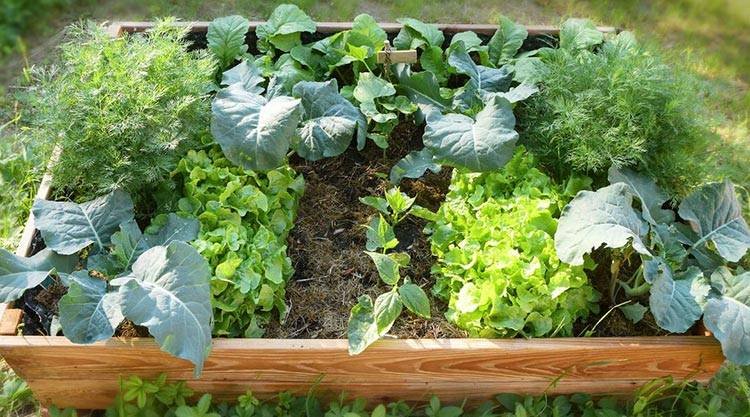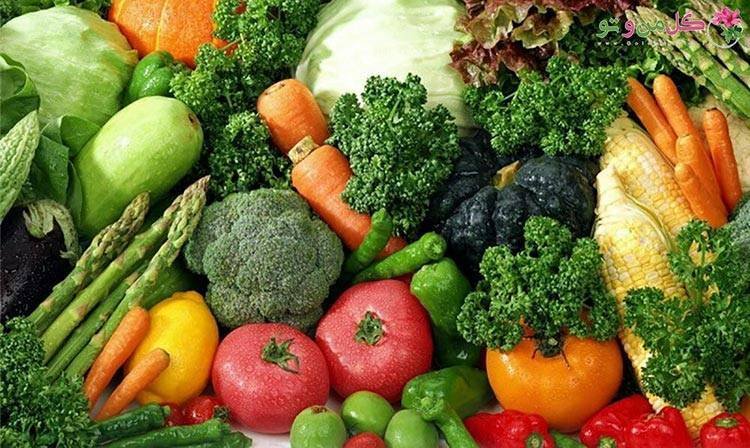Beautiful Plants For Your Interior
How to Start a Vegetable Garden for Beginners: 10 Steps for Successful Gardening

How to start a vegetable garden for beginners is one in our series of ‘How to posts’. If you are itching to get outside, get your hands dirty, and grow something? Try a vegetable garden! Vegetable gardens are great for beginners because they require less maintenance than other types of gardens. You don’t have to spend hours weeding or pruning; once established, most vegetables will thrive with minimal attention.
Vegetable gardens are also one of the most rewarding home gardening experiences. Growing your own produce is much more economical than buying it at the supermarket or your local fruit and veg shop, and there’s nothing like harvesting your own food. If you’re ready to get started on a new hobby and dip your toes into the world of vegetable gardening, read on for our top 10 tips for successful gardening.
Vegetable gardens come in all shapes and sizes. The layout and types of plants you use will depend on your goals and the amount of space you have.
There are a few main types of gardens:
Container gardens – Container gardens are the perfect solution for growing herbs and vegetables in small spaces or indoors. You can even create vertical container gardens for growing plants on your porch or patio.
Raised beds – Raised beds are a popular way for beginners to garden because they’re easier to manage and maintain than traditional gardens. They’re also a great option for growing vegetables in clay or loamy soils.
In-ground gardens – In-ground gardens are a popular choice for experienced vegetable gardeners. They’re a little more difficult to maintain, but they need more space and can be harder to start than other types of gardens.

How to start a vegetable garden for beginners: A raised bed is a great option for a vegetable garden as a beginner
Plan Your Garden and Know What You’ll Grow
Before you start digging, sketch a rough plan of your garden. Vegetable gardens are often laid out in a grid, but they don’t have to be. Planning your garden will help you decide how many rows or grids, buckets or containers you’ll need and what plants to place where.
Vegetable gardening can be a gratifying and healthy hobby, but only if you choose suitable vegetables for your climate and skill level. We suggest getting down to your local nursery and asking a proffesional what grows well in your area, and what’s easy to grow as a beginner, particularly if you intend to start in-ground gardening, as your soil type will be a critical factor to success.
Also, consider the size of your garden and how much produce you want to grow. If you have a small area to grow in, you may want to grow vegetables that produce more per plant, like chillies or radishes, rather than a large head of lettuce.
Water Access For Your Garden
The best place for a vegetable garden is near water. Take this into consideration when planning your garden. If plant roots are watered regularly, it will ensure strong growth and healthy plants from day one!
The best way to make sure your plants are getting all the water they need when they need it is by installing a drip irrigation system on a timer. This will help you save time and energy in watering, while also preventing excess moisture from running off through evaporation!
Decide Where to Place Your Garden
Vegetable gardens can be planted just about anywhere, but they are more successful when they are placed in sunny locations and the area, pot or planter are well-drained. You can also use a shaded area, but it’ll be more challenging to grow your vegetables.
Vegetable gardens are often planted in rows, but you can also grow a ‘square foot garden’. Square foot gardens or square planting as it’s often called, are great for beginners. You can use them to grow any kind of vegetable, and they’re easy to maintain. Choose a spot that’s close to your kitchen so you don’t have to walk too far to harvest your produce. If it’s possible, why not plant a few rows of vegetables around the edge of your property for easy harvesting?
Grow in Healthy Fertile Soil
Healthy, fertile soil is the foundation of a successful vegetable garden or in fact any garden. When planning your garden, add compost or other soil amendments to improve soil quality.
If you are going to grow your vegetables in ‘pots’ and or ‘raised beds’ then soil quality is far easier to control and manage as you will be able to ‘prepare’ these types of beds yourself with the help of your local garden centre.
If you are planning to grow ‘in-ground’ vegetables, then you may also want to consider adding fertiliser to boost your soil’s nutrients, especially if the soil in your area is very sandy. Please read our in-depth post on ‘improving soil quality’ linked above on how best to improve your soil.
Once you’ve amended your soil and pH, use a spade to ’till’ the area where you plan to plant your vegetable garden. To till your soil, pick up a spade, place it in the ground, and pull it towards you. This will break up any large pieces of soil, help your fertiliser to break down, and allow water to penetrate your soil more easily.
If you have sandy soil, consider adding organic materials like peat moss or shredded newspaper to help it retain water. However, be careful and avoid adding too many materials that will pack your soil down, as this can make it difficult for water and air to penetrate.
How to Start a Vegetable Garden for Beginners: 8 Easy-to-Grow Vegetables For Beginners
Start With Seeds or Seedlings?
When starting your vegetable garden, you have two options: seeds or seedlings.
Seedlings are already mature enough to be transplanted into pots, raised beds or your garden, while seeds need to be planted in starter pots or trays first.
Seedlings that are ready to plant out are usually sold in small pots. These seedlings are young plants that have been sprouted and grown in a greenhouse or a similar controlled environment. There are benefits and drawbacks to both methods.
If you start with seeds, you’ll have a wider variety of plants to choose from, and you may save money on seedling plants. However, seeds take longer to sprout, so you’ll need to plan your garden accordingly. In addition, you may need a controlled environment like a ‘small greenhouse’ to ‘start them off’ in time to plant out.
If you start with seedlings or seeds, you’ll need to plant them in starter pots or trays for a couple of weeks before transplanting them into your growing area, be it in raised beds, containers or your garden.
Add More Plants to Your Garden After Harvesting
Vegetable gardens will only be successful if you regularly harvest your plants. This way, your garden will keep producing more vegetables, and you’ll never run out of produce.
This is especially important in a larger garden that’s been planted with a wide variety of vegetables. It’s easy to forget ‘when’ you planted ‘what’ vegetables and when you need to harvest them.
Keeping a garden journal or using a smartphone app can make this easier. If you run out of room in your garden, you can also plant ‘succession’ or ‘catch’ crops. A ‘succession’ garden is a group of vegetables that have different harvest times. A ‘catch crop’ is a single type of plant that you plant after harvesting your main vegetable garden.
How Much Can I Grow? Productivity
How much produce do you need and which vegetables will keep providing through the season? If tomatoes, peppers, cucumbers or squash are your desired fruit and vegetables, then it may be enough to plant just one variety of each.
Think about how much you and your family will eat themselves and how likely you are to freeze anything in excess, can, or will you give away excess produce?

How to Start a Vegetable Garden for Beginners: How Much Produce Do You Need? Decide What you and Your Family Need!
What to Grow? Successive Cropping
To get the most from your garden, grow what you love to eat. However, try planting both cool and warm-weather vegetables. In early spring try growing lettuce or greens (such as rocket), peas, radishes, carrots and broccoli. While in the summer months plant tomatoes, peppers, eggplants, herbs etc.; autumn is a great time to harvest potatoes, cabbage and kale. So throughout all the seasons, you can harvest what you planted.
Pests and Disease
There are a number of steps you can take to protect your veggies from pests and diseases. Follow these few guidelines for the best protection:
Keeping weeds to a minimum is important for giving your vegetables the best chance of success. They compete with your vegetables for light, water and nutrients. To keep them at bay you can use a mulch of clean straw or compost, while plastic mulch helps discourage any weed seedlings that pop up in this environment. Use a garden hoe if need be for any stubborn rooted weeds that appear.
Fruit and vegetable-bearing plants are great for attracting wildlife, but they can also be a magnet if you don’t keep them contained. In order to keep the likes of deer and rabbits out, it may be necessary that you maintain an 8ft (2.4m) fence around your garden area with the height extending 6in (150mm) under soil level; this will prevent any digging or jumping by these pests into what could be a lucrative edible patch!
If there are squirrels and birds causing problems then consider using chicken wire cages for protection instead.
The best way to get rid of disease-causing insects is by hand-picking them one at a time or spraying insecticidal soap onto the problem area.
If you have more than small quantities, use pesticides that can be purchased at your local garden centre for safe and effective pest control results! Or depending on what insects you have natural predators such as ladybirds or lacewing larvae for greenflies and aphids may be a better and more environmentally sensitive option.
Finally, fungal diseases are best avoided by watering the soil, not the leaves of plants. If using an automatic sprinkler do so early in the day so as to allow time between cycles and avoid making wet spots on top growth which may cause spores or other fungi-infested material.
Remove any infected leaves or plants immediately and throw them away. To keep your plants healthy, it is important to grow a variety of vegetable varieties that are listed as disease-resistant and change the location each year (crop rotation ) in order to reduce encouraging microbes.
FAQs
How Much Space Do I Need to Start a Vegetable Garden?
The amount of space you need depends on the type of garden you want to grow and the vegetables you want to plant. A traditional garden bed of about 10 ft x 10ft (3m x 3m) is a good starting point for beginners.
How Often Should I Water my Vegetable Garden?
Most vegetables need at least 1in (25mm) of water per week, either from rainfall or irrigation. Water deeply and less frequently, rather than shallowly and frequently, to encourage deep root growth. Check the soil moisture regularly and adjust the watering schedule as needed.
Can I Start a Vegetable Garden in Pots or Containers?
Yes, you can Absolutely! Container gardening is a great way to start a vegetable garden if you don’t have much space. Choose large containers that are at least 12in (30cm) deep and have drainage holes at the bottom. Fill the containers with a good-quality potting mix, and choose vegetables that are suitable for container gardening, such as tomatoes, peppers, and herbs.
Conclusion
There are many benefits to starting a vegetable garden. You can grow food, save money, and get healthier by eating more plant-based foods and getting some exercise to boot.
You can also take pride in your garden, and it can be a great hobby for all ages. Vegetable gardening doesn’t have to be difficult, and it can be extremely rewarding. By following these 10 tips above, you can easily avoid the common pitfalls of vegetable gardening.
If this post has helped you in any way, please share it with your family and garden-loving friends or anybody looking to know ‘How to Start a Vegetable Garden for Beginners
Finally, you can always pop over to our FAQ page to find out more about vegetables and gardening and a whole host of other answers to your gardening questions and queries.
